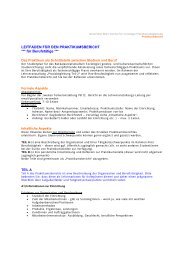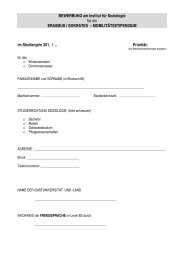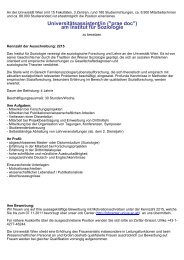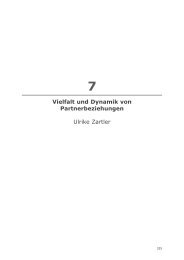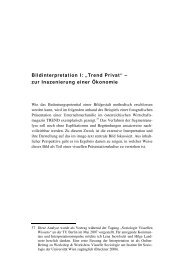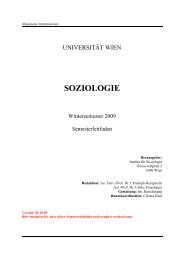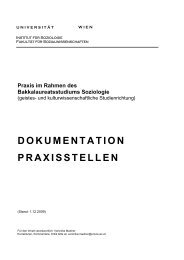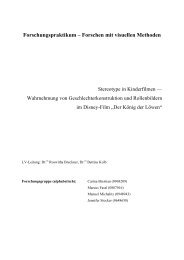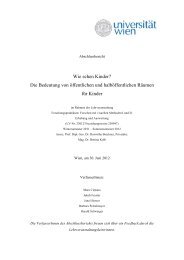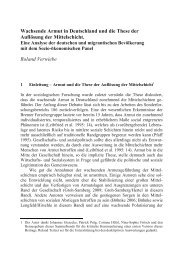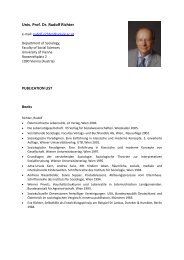Why do Europeans Migrate to Berlin? SocialStructural Differences ...
Why do Europeans Migrate to Berlin? SocialStructural Differences ...
Why do Europeans Migrate to Berlin? SocialStructural Differences ...
You also want an ePaper? Increase the reach of your titles
YUMPU automatically turns print PDFs into web optimized ePapers that Google loves.
22 Verwiebe<br />
the paper, principally through the analyses. Social reasons for migration<br />
<strong>to</strong> <strong>Berlin</strong> are more common among women (pre<strong>do</strong>minantly from Italy<br />
and Poland), among individuals with vocational training at the secondary<br />
level and among <strong>Europeans</strong> from the middle or lower class. Economic<br />
reasons for migration are found more frequently among male<br />
<strong>Europeans</strong> and among those who are integrated in<strong>to</strong> networks of their<br />
respective nationalities. The age group between 21 and 29 years (especially<br />
from Italy and Great Britain), the highly educated and those without<br />
higher education degrees (most of all from Poland and France),<br />
those who have been mobile since the mid-1990s within Europe (especially<br />
from France and Italy), as well as those from a higher social class<br />
all migrate more often for cultural reasons than other social status<br />
groups.<br />
Finally, in terms of future research, it would be useful <strong>to</strong> consider the<br />
relevance of the results presented here for the migration of other<br />
national groups <strong>to</strong> other European countries as well. How <strong>do</strong> the reasons<br />
for migration of Spanish or German migrants in Lon<strong>do</strong>n differ<br />
from those of British or French migrants in <strong>Berlin</strong> for example? It seems<br />
equally important <strong>to</strong> study more intensively the motives for migration<br />
and the migration patterns of individuals from the new EU states, the<br />
so-called accession countries, because it is very likely that migration<br />
from these countries will increase in the coming years, which will probably<br />
change migration patterns within Europe and the social fabric of the<br />
European Union as a whole. For such an enterprise it would be very<br />
useful <strong>to</strong> have access <strong>to</strong> more extensive data, with more respondents per<br />
participating nationality and additional independent social status variables,<br />
which would allow one <strong>to</strong> take in<strong>to</strong> account more aspects of<br />
European migration than has been possible in this modest study.<br />
NOTES<br />
1. For an overview of important aspects of family and marriage-related migration,<br />
cf. e.g. JEMS, Volume 30 (2).<br />
2. According <strong>to</strong> Kofman (2004: 247f.), four fac<strong>to</strong>rs have militated against taking<br />
the family unit as an object of analysis in migration studies: 1. Economic<br />
theory neglects the family because the activities that take place<br />
within it cannot be measured in monetary terms. 2. The second fac<strong>to</strong>r is the<br />
view that transactions occur between the individual and the state, and on<br />
the individual level the principal agent for those transactions is assumed <strong>to</strong><br />
be the male head of household. 3. The third fac<strong>to</strong>r is based on the<br />
dicho<strong>to</strong>my between the economic and the social in which the economic<br />
Ó 2011 The Author<br />
International Migration Ó 2011 IOM





